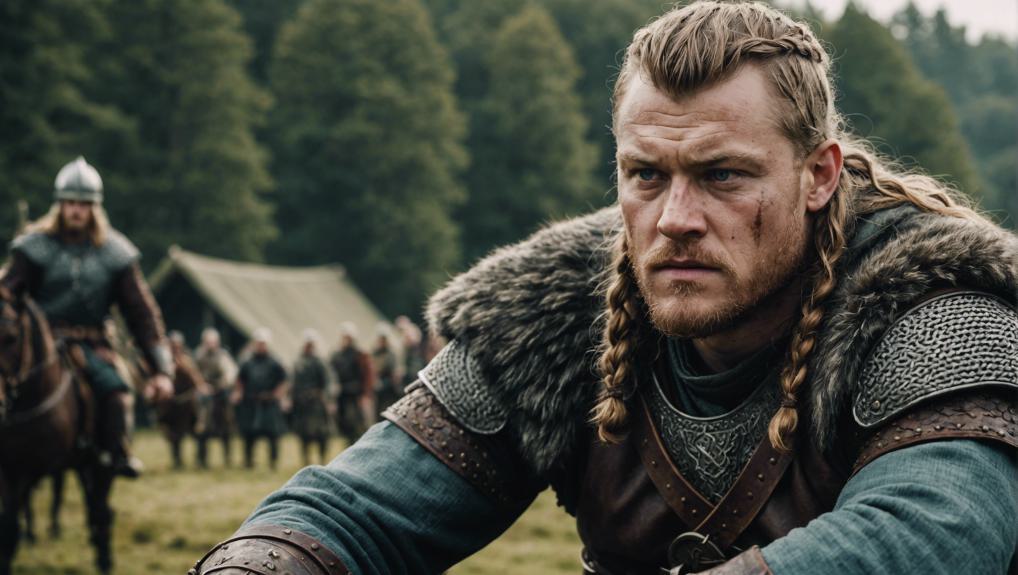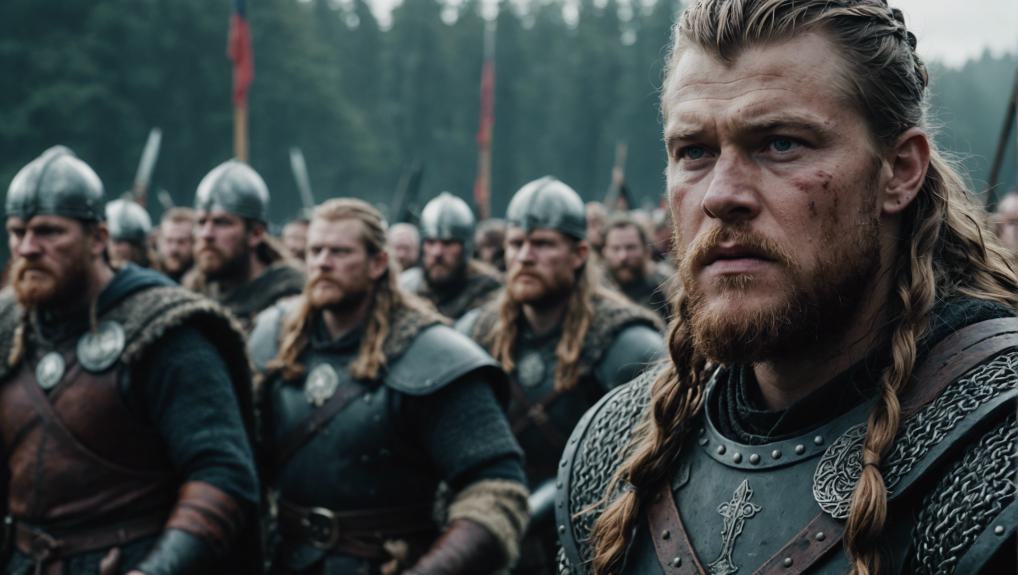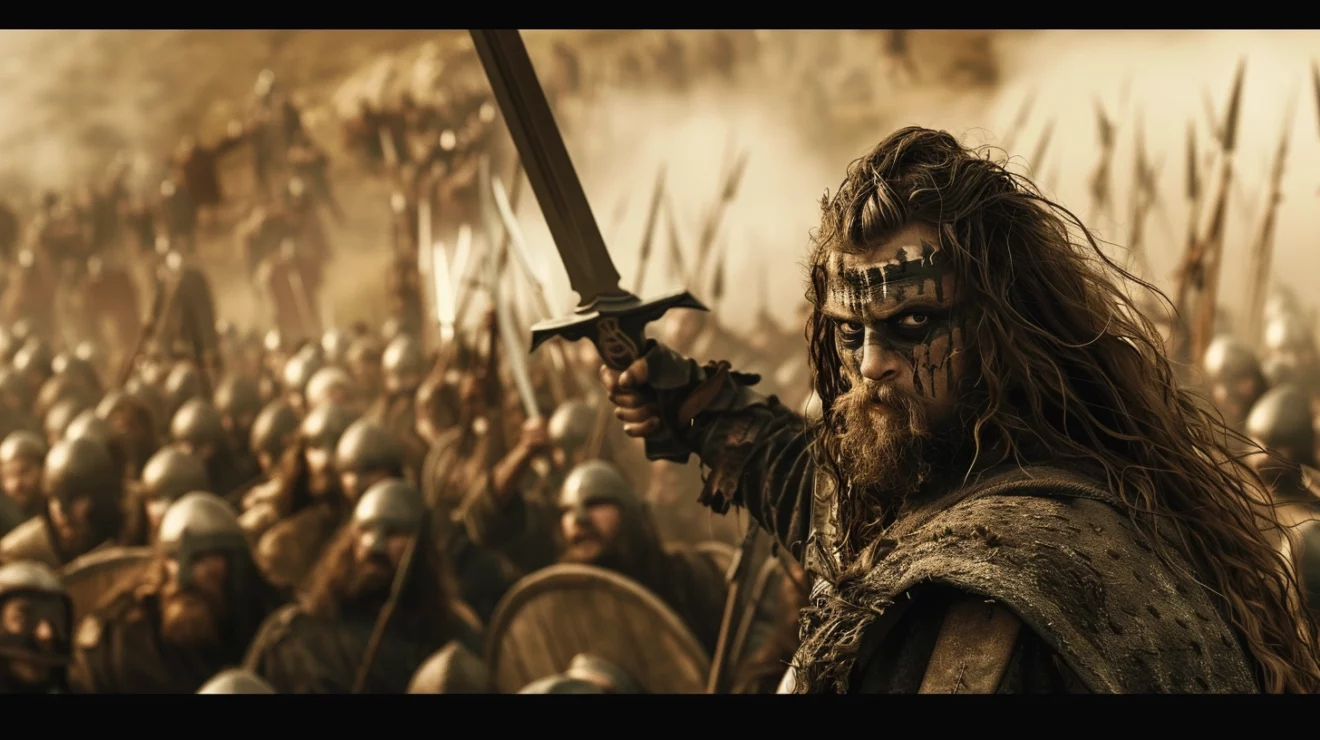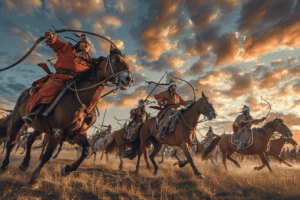Ivar the Boneless, as the mastermind of the Viking campaigns in England, strategically led the Great Heathen Army to conquer key Anglo-Saxon territories, reshaping Viking history.
His tactical astuteness, employing surprise attacks and psychological warfare, weakened adversaries and brought significant changes to the English kingdoms.
Commanding cavalry and infantry units with precision, Ivar adapted siege techniques and foresaw strategic opportunities, solidifying Viking presence in England.
His legacy reverberates through the Uí Ímair dynasty, leaving an indelible mark on Anglo-Saxon history. His calculated conquests and lasting impact hint at the depths of his historical influence.
Ivar the Boneless: Early Life
Ivar the Boneless, born into Viking royalty, faced early challenges that would shape his legendary path. As the son of the renowned Ragnar Loðbrok, Ivar’s nickname, ‘Boneless,’ sparked various theories and legends about its origins.
Despite his physical condition, Ivar was revered for his exceptional wisdom and cunning on the battlefield. His strategic prowess came to the forefront when he played a pivotal role in leading the Great Heathen Army‘s invasion of Anglo-Saxon territories. Through his leadership in battles, Ivar contributed greatly to the capture of key territories such as Northumbria and Mercia.
These early victories laid the groundwork for the Viking campaigns in England, showcasing Ivar’s military acumen and determination. His ability to outmaneuver foes and secure crucial strongholds solidified his reputation as a legendary Viking figure, setting the stage for even greater feats in the turbulent times that lay ahead.
Viking Campaigns in England Begin

The Viking campaigns in England commenced with the arrival of the Great Heathen Army in AD 865, marking a pivotal turning point in Anglo-Saxon history. Led by Ivar the Boneless, one of the Sons of Ragnar, these incursions brought about significant changes in the Anglo-Saxon kingdoms. Ivar’s strategic leadership and military prowess were instrumental in the Vikings’ conquest of various territories, showcasing his tactical acumen on the battlefield.
Under Ivar’s command, the Great Heathen Army’s invasion of England posed a formidable challenge to the Anglo-Saxon forces. The campaigns led by Ivar, alongside his brothers Halfdan and Ubbi, demonstrated the Vikings’ ability to outmaneuver their opponents and secure key victories in English history. These events set the stage for intense clashes between the Vikings and the Anglo-Saxon defenders, ultimately shaping the outcome of the conflicts that would define this period of history.
Military Strategies and Tactics

Utilizing a combination of surprise attacks and quick movements, strategic advantages were gained by Ivar the Boneless in battle. By implementing these tactics, Ivar kept his enemies off guard, striking swiftly and decisively to unsettle their defenses. He also employed psychological warfare, instilling fear in his adversaries to weaken their resolve before engaging in combat. Ivar’s mastery extended to the coordination of cavalry and infantry units, showcasing his tactical acumen on the battlefield. Through well-planned maneuvers, he strategically targeted key Anglo-Saxon territories, aiming to secure a firm grip on England.
Moreover, Ivar’s innovative siege techniques and adaptability to different terrains played a pivotal role in his military successes. His ability to devise new strategies on the spot and adjust to the challenges presented by varied landscapes demonstrated his exceptional leadership. These tactics, combined with his strategic foresight, allowed Ivar to gain significant strategic advantages in the Viking campaigns in England, setting the stage for further conquests in the region.
Conquest of English Kingdoms

Strategically targeting key English territories, the Great Heathen Army, under Ivar the Boneless‘ leadership, set out on a conquest to establish dominance and avenge their father’s death. Through calculated military tactics and strategic land acquisitions, the Viking campaign led by Ivar proved highly successful in conquering Northumbria, East Anglia, and Mercia in England. Ivar’s astuteness in warfare and his ability to outmaneuver the English forces played a pivotal role in these conquests.
The Great Heathen Army’s invasion of English kingdoms marked a significant turning point in Viking history, showcasing their formidable power and determination under Ivar’s command. The victories in Northumbria, East Anglia, and Mercia solidified the Vikings’ presence in England and furthered their goal of expanding their influence across the region. Ivar’s leadership and strategic prowess were instrumental in these conquests, leaving a lasting impact on the history of Viking campaigns in England.
Legacy and Historical Impact
Ivar the Boneless’ decisive victories in Northumbria, East Anglia, and Mercia left a lasting legacy that reshaped Viking history in England. His strategic leadership in the Viking campaigns played a pivotal role in the capture of key Anglo-Saxon territories, establishing a foundation for Viking invasions in the region. Ivar’s influence extended beyond mere conquests, as he laid the groundwork for the Uí Ímair dynasty, shaping the political landscape of England and Ireland for years to come.
Historical records depict Ivar the Boneless as a prominent figure in Anglo-Saxon history, with his enigmatic persona adding to the intrigue surrounding his legacy. The origins of his nickname, ‘Boneless,’ remain shrouded in mystery, further fascinating historians and enthusiasts alike. Through his actions and leadership, Ivar cemented his place as a significant player in the Viking incursions into England, leaving an indelible mark on the historical narrative of the time.
Reign of Ivar the Boneless

During his reign, a formidable Viking leader reshaped the course of history in England through cunning strategies and decisive conquests. Ivar the Boneless, a prominent Viking leader, spearheaded the invasion of Anglo-Saxon territories with the Great Heathen Army.
Employing clever tactics such as strategic land acquisition, Ivar played a pivotal role in capturing Northumbria and Mercia during the Great Heathen Army invasion. Accounts of Ivar’s death are varied, with legends adding to the mystique surrounding his legacy.
The discovery of a burial mound in Repton has sparked speculation about his final resting place, further shrouding his death in intrigue. Ivar the Boneless’ impact extends deep into Viking and Anglo-Saxon history, leaving an indelible mark on medieval history.
His legacy is intertwined with significant events in the region, shaping the course of history for generations to come. Through his leadership and conquests, Ivar secured a lasting place in the annals of Viking and Anglo-Saxon history.
End of Ivar’s Leadership

With Ivar the Boneless’ death in 873 or 874, the leadership of the Viking campaigns in England underwent a significant shift. Following his demise, the reins of the Great Heathen Army were passed to other notable figures like Guthrum and Halfdan. This change in leadership had a profound impact on the strategies employed and the direction taken in the Viking campaigns across Anglo-Saxon territories. Ivar’s absence created space for new leaders to emerge, influencing the course of Viking activities in the region.
The end of Ivar the Boneless’ leadership marked a turning point in the Viking campaigns in England. It signaled a shift in power dynamics and strategic decision-making within the Great Heathen Army. As new leaders rose to prominence, they brought fresh perspectives and approaches to the ongoing endeavors in Anglo-Saxon territories. The shift following Ivar’s death set the stage for future Viking activities, shaping the trajectory of their campaigns in England and beyond.










Add Comment